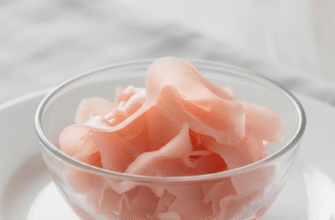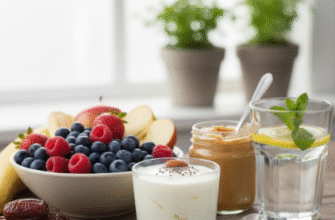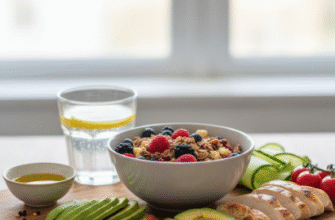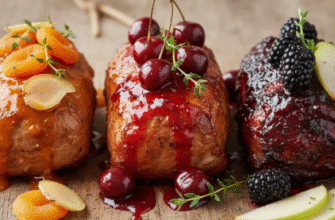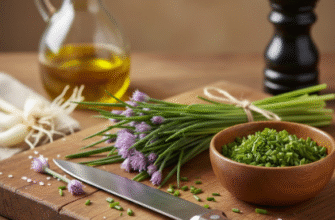Stepping into the kitchen, surrounded by the potential of ingredients, one question often pops up when following a recipe or improvising: should I use fresh herbs or their dried counterparts? It seems simple, but the choice can significantly impact the final flavour profile of your dish. Herbs are the unsung heroes of cooking, adding depth, brightness, and complexity that salt and pepper alone cannot achieve. Understanding the difference between fresh and dried herbs, and knowing when to deploy each, is a fundamental skill for any home cook looking to elevate their meals from ordinary to extraordinary.
The Fundamental Difference: Water and Intensity
The most obvious difference between fresh and dried herbs lies in their water content. Fresh herbs are plump with water, carrying volatile aromatic oils that provide their characteristic bright, vibrant, and often delicate flavours. Think of the sharp, clean scent of freshly chopped parsley or the pungent perfume of basil leaves just plucked from the stem. Drying removes most of this water, concentrating the remaining flavour compounds. This process fundamentally changes the herb’s character. The flavour often becomes more muted, earthy, and sometimes slightly bitter, but also more concentrated and robust in its own way. The texture, of course, changes dramatically from tender leaves to brittle flakes or powders.
When Fresh Herbs Shine Brightest
Fresh herbs generally excel where their vibrancy and delicate nuances can take centre stage, often added towards the end of the cooking process or used raw.
Finishing Touches
Sprinkling chopped fresh herbs over a finished dish just before serving adds a burst of colour, aroma, and fresh flavour that cooking would diminish. Think of scattering fresh cilantro over tacos, parsley over pasta, chives over scrambled eggs, or mint over a fruit salad. This final flourish awakens the palate.
Raw Preparations
Salads, dressings, pestos, salsas, and dips heavily rely on the crisp, bright notes of fresh herbs. Basil is the heart of pesto, cilantro defines many fresh salsas, and dill is essential in creamy dips and sauces like tzatziki. Using dried herbs here would result in a completely different, often less desirable, texture and flavour profile.
Short Cooking Times
If a dish cooks quickly, like a simple pan sauce, stir-fry, or omelette, adding fresh herbs towards the very end allows them to gently wilt and release their flavour without being obliterated by heat. Delicate herbs like tarragon, chervil, and dill particularly benefit from this gentle treatment.
Specific Herb Profiles
Certain herbs simply lose too much of their essential character when dried. Cilantro, parsley, chives, and mint are prime examples. Dried cilantro tastes vastly different (and to many, less pleasant) than fresh. While dried parsley exists, it offers little more than colour compared to the clean, grassy notes of fresh parsley.
The Case for Dried Herbs: Endurance and Depth
Dried herbs shouldn’t be seen as merely a convenient substitute; they have their own strengths and are often the better choice in specific culinary applications.
Long Cooking Processes
When making stews, soups, braises, roasts, or long-simmering sauces, dried herbs are often preferable. Their concentrated flavours are released slowly over time, infusing the entire dish with deeper, earthier notes. Fresh herbs added at the beginning of such long cooking times would lose their potency and delicate flavours. Robust, woody herbs like rosemary, thyme, oregano, sage, marjoram, and bay leaves hold up exceptionally well to drying and extended heat.
Dry Rubs and Marinades
For seasoning meats before roasting or grilling, dried herbs are ideal for rubs because they adhere well and contribute concentrated flavour without adding extra moisture, which can inhibit browning. In marinades, while fresh herbs can be used, dried ones offer potent flavour that penetrates effectively over time.
Baked Goods
Dried herbs incorporate easily into doughs for breads, scones, or savory pastries, distributing their flavour evenly throughout the baking process.
Convenience and Availability
Let’s be practical. Dried herbs have a much longer shelf life and are readily available year-round. Keeping a well-stocked pantry of dried herbs ensures you always have flavour enhancers on hand, even when fresh options aren’t available or practical.
Substitution Guideline: As a general rule of thumb, you can substitute 1 teaspoon of dried herbs for 1 tablespoon of fresh herbs. Remember this ratio is approximate. Taste and adjust as needed, as the potency of both fresh and dried herbs can vary. This ratio primarily applies to leaf herbs; conversions for ground dried herbs might differ slightly.
Navigating the Substitution Maze
While the 1 tablespoon fresh = 1 teaspoon dried rule is a helpful starting point, it’s not absolute. The intensity of dried herbs can vary depending on their age and how they were processed. Similarly, the flavour strength of fresh herbs can fluctuate with season and variety. Always start with a little less dried herb than you think you might need, especially if substituting for delicate fresh herbs like basil or mint. You can always add more, but you can’t take it out. Conversely, if using fresh herbs instead of dried in a long-cooking recipe, you might need to add significantly more, perhaps adding some at the beginning for depth and more towards the end for brightness.
Keeping Your Herbs Happy: Storage Matters
Storing Fresh Herbs
Fresh herbs are perishable. To extend their life, treat them like little bouquets. Trim the stems and place them upright in a jar with an inch of water, covering loosely with a plastic bag before refrigerating (this works well for parsley, cilantro, mint). For others like thyme or rosemary, wrap them loosely in a slightly damp paper towel and place them in a resealable bag or container in the fridge. Basil is notoriously cold-sensitive and often does best kept at room temperature in a jar of water, away from direct sunlight.
Storing Dried Herbs
Maximize the shelf life and potency of dried herbs by storing them in airtight containers away from heat, light, and moisture. A cool, dark cupboard or drawer is ideal – not above the stove! Whole dried herbs last longer than ground ones. How do you know if they’re still good? Crush a little between your fingers. If the aroma is weak or dusty, it’s time to replace them. Generally, aim to use dried leafy herbs within a year and ground spices/herbs within six months for best flavour.
Handle Dried Herbs Carefully: When adding dried herbs to hot oil or dishes, be mindful they can burn quickly due to their lack of moisture. Adding them along with other ingredients or liquids is often safer. Also, remember to crush dried leafy herbs (like oregano or thyme) slightly between your fingers before adding them to your dish; this helps release their aromatic oils more effectively.
When Rules Are Meant to Be Broken (Or At Least Bent)
While the guidelines above are useful, cooking is also about intuition and preference. Some herbs bridge the gap beautifully. Oregano, for instance, is fantastic fresh, but dried oregano is a cornerstone of many Italian-American sauces and pizza seasonings, offering a pungent depth that many prefer in that context. Thyme and rosemary are robust enough that both fresh and dried versions are widely used, sometimes even together in the same dish for layers of flavour. The key is to experiment. Make the same simple tomato sauce twice, once with fresh basil added at the end, and once simmered with dried oregano. You’ll quickly learn the distinct character each brings and develop your own preferences.
The Joy of Growing Your Own
If you find yourself frequently reaching for fresh herbs, consider starting a small herb garden, even if it’s just a few pots on a sunny windowsill. Having fresh basil, parsley, mint, chives, or rosemary readily available is incredibly rewarding. It cuts down on waste (how often have you bought a bunch of parsley only to use a fraction?), saves money, and provides the freshest possible flavour right at your fingertips. Plus, it adds a lovely touch of green to your living space!
Ultimately, both fresh and dried herbs have valuable places in your kitchen arsenal. Neither is inherently “better” – they are simply different tools for different jobs. By understanding their unique characteristics and learning when to use each, you unlock a wider spectrum of flavours and aromas, making your home cooking more dynamic, delicious, and deeply satisfying. Don’t be afraid to play, taste, and discover what combinations work best for you and the dishes you love to create.


